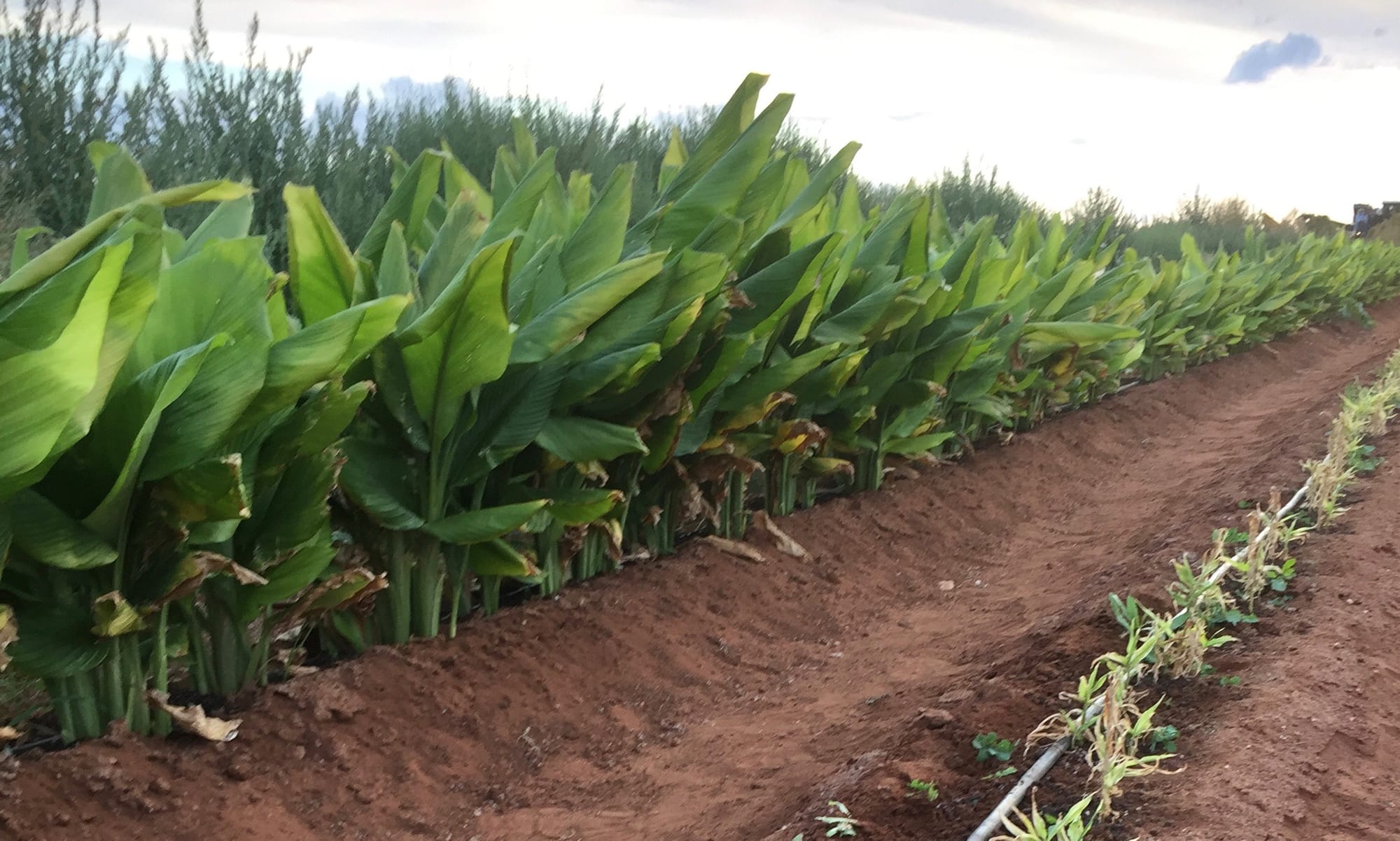Transforming Riverland turmeric into a sought-after delicacy
NESTLED on Barmera’s south side, the 70-acre property looks unassuming, but once you realise what a husband-and-wife team are farming and how they are doing it, everything you see starts to dazzle the eyes. Barmera’s Peter and Anne Brooke are...

NESTLED on Barmera’s south side, the 70-acre property looks unassuming, but once you realise what a husband-and-wife team are farming and how they are doing it, everything you see starts to dazzle the eyes.
Barmera’s Peter and Anne Brooke are a thriving example on how to expand a small farming business into a well-known product.
After trying to grow different crops on their farm, they found that sweet potatoes and turmeric thrived in the dry soil and weather conditions of the Riverland.
Famous for its variety of crops and vegetables, Riverland farmers have attempted to grow different crops that are not common for this weather.
Only a handful of farmers, like Peter and Anne, decided to venture themselves into turmeric for commercial purposes.
The decision came about with the need to grow something innovative that would allow them to create a niche market in their weekly trips to the farmers market in Adelaide.
“We get all our produce into our van and drive to the Adelaide Showground market every weekend, where we sell basically every crate we bring,” Ms Brooke said.
“Some weekends when turmeric is really needed, we can get almost $60 per kilo”.
Learning about turmeric and its farming process was a bit of a raffle.
While the pair had been farming for nearly twenty years, they developed a unique process over the past couple of years with YouTube videos and extensive farming experience.
The couple then decided to allocate a tenth of an acre for turmeric and worked to see where things went.
100 days later, a mature crop had appeared which is something, even today, still surprises them.
“It was tricky trying to get them out of the ground without scratching or breaking them,” Mr Brooke said.
A total of seven years have passed and now they have developed a technique to grow turmeric and sweet potatoes, without damaging the produce or the soil in the process.
“The farming process for both vegetables is almost identical, mounds and cuttings are formed (turmeric’s are called rhizomes) and the planting process is done during the summer,” Mr Brooke said.
“One dose of organic fertiliser, called rapid raiser, is given to the plants through a reusable drip after the first weed crop is removed”.
Weeding is one of the biggest tasks when growing organic vegetables and spices, since it’s a continuous job that needs daily attention to protect the entire crop.
“We grow about 1000 plants of turmeric every year, but we prefer to dig them in the second year, where we can get up to a kilogram of turmeric from each plant,” Ms Brooke said.
When the harvesting process is due, an undercutter is used to loosen both crops at the same time.
Peter and Anne hand-dig every root and stem, this being a unique and forgotten practice nowadays.




“We found it more practical to use compressed air, since water used to leave many residues, but with air we can get the turmeric really clean and beautiful,” Mr Brooke said.
At this point, all the collected produce is organised in plastic crates, carefully handpicked and placed into storage for the next weeks.
Turmeric can be farmed between March and October, dividing the days of the week to better organise this two-people operation.
“Turmeric is dug out each week and we divide the days of the week into digging days, which are Mondays and Tuesdays, and washing days which are reserved for Wednesdays and Thursdays,” Ms Brooke said.
Summer is dedicated to planting the seeds and looking for overwatering during hot days.
The turmeric plant blossoms a beautiful white cone-shaped flower that is being used for flower arrangements, weddings and dinner events.
“We store turmeric for the next weeks and months since it doesn’t go bad, and we sell it as needed until November or December,” Mr Brooke said.
The Barmera couple currently farm two varieties of turmeric, with the orange one being the most common one, used for cooking and spices.
The second type carries a yellow tone, which is a desired vegetable due to its apparent medicinal purposes, increasing its value by more than 35 per cent in the last two years.
“Everyone is aware of the benefits of turmeric, but having it fresh, magnifies its benefits,” Ms Brooke said.
“I’d say if you have the possibility to grow one plant in your garden, it would have to be turmeric.”
“It is one of the easiest plants to grow and the health benefits are amazing.”
“We make a tonic by blending 100 grams of turmeric, a tablespoon of black pepper, a tablespoon of honey and some lemon juice,” Ms Brooke said.
“We then put this mix into a jar and store it in the refrigerator, which we then have one tablespoon every morning, but I add a quarter of orange juice.”
Turmeric is also sold at the Adelaide Showground Farmers Market in 100 gram lots for $6.
While the Brooke’s could try to sell their product at a much bigger scale, they are aware about the fierce competition from Queensland’s farmers and are conscious that their product is grown and sold for local markets only.
Their company Sweet Potatoes were the first to be Certified Organic in Australia and with their hands and impeccable work, have stayed as one of the top turmeric and sweet potatoes farmers in Australia.
“Growing food organically, without all the nasty chemicals is how we like to eat our food,” Ms Brooke said.
“Unfortunately, main stream agriculture is all about mass production and the big corporations care mainly about their bottom lines.”
“It would be nice to do the full circle and go back to small farms”.





